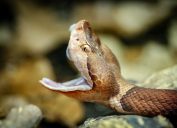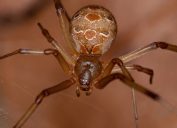Venomous Animal Encounters on the Rise—Here Are the Scariest Offenders
You might want to stay away from these creatures when you're out in the wild.

Spending time outdoors can be a great way to relax and reconnect with nature. But even if you're being careful not to disturb any potentially dangerous animals, data shows that human run-ins with venomous creatures have begun to increase. And while there's likely no single explanation for the change, experts say there could be a few things that could be contributing to the spike.
"A lot of new people started spending time in the outdoors as a hobby during the pandemic, and many have continued to do so," Charles van Rees, PhD, conservation scientist and naturalist at the University of Georgia, tells Best Life. "Beyond that, the real estate frenzy in the U.S. and other places also means that a lot of people are looking to develop new land and pushing into places that were formerly housing wildlife. All of this, of course, greatly increases the chances of human-wildlife contact."
Fortunately, knowing what's out there can help you stay prepared and allow you to keep enjoying nature safely. Read on to see what the scariest offenders are now that venomous animal encounters are on the rise, according to experts.
READ THIS NEXT: "Very Large" New Spider Species Discovered—Here's Where There May Be Hiding.
1
Brown Recluse Spider
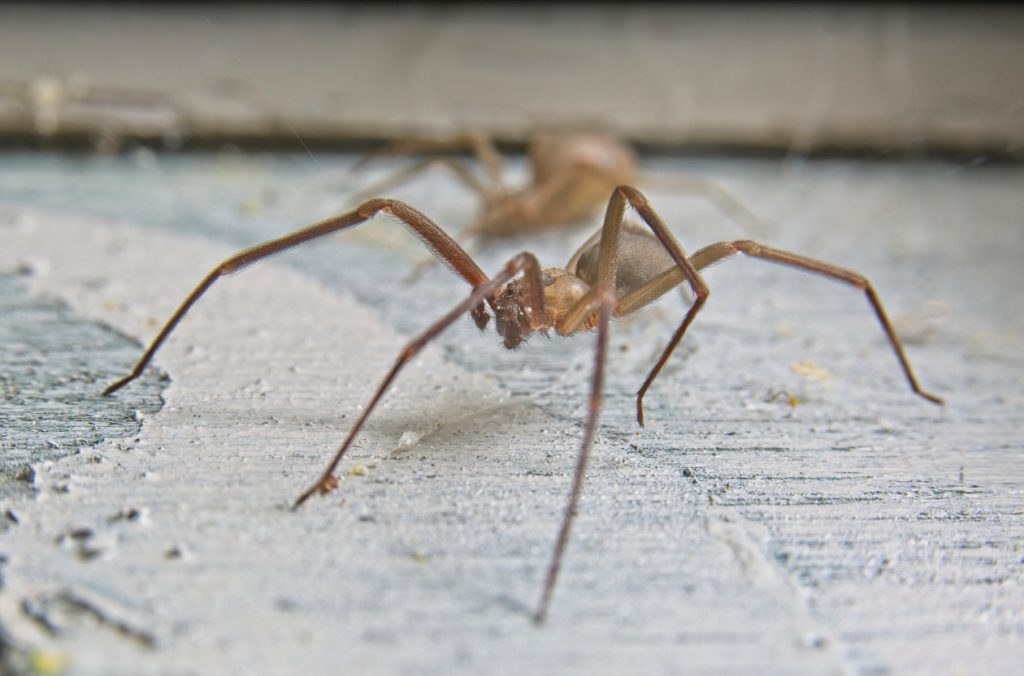
As the weather warms up, most people expect to see more reptiles in their yards as they become more active after the winter. But according to experts, spiders also begin their seasonal feeding frenzy as the flies, mosquitos, and other insects they prey upon begin to swarm again.
However, while arachnids play a crucial role in the food chain and keeping pests at bay, there is one species that whose bite has made it infamous: the brown recluse spider.
"Found in various regions of the U.S., this spider is known for its necrotic venom, which can lead to tissue damage and slow-healing wounds in some cases," says Georgina Ushi Phillips, DVM, a writer for The Reptile Room and a Florida-based veterinarian. "I would know because I've been bitten by one!"
As the name suggests, the species is notoriously shy and typically hides in more secluded areas like woodpiles, sheds, attics, basements, and closets, according to the Centers for Disease Control and Prevention (CDC). But the agency also points out that they "cannot bite humans without some form of counter pressure, for example, through unintentional contact that traps the spider against the skin."
You can help protect yourself by shaking out your clothes before putting them on after being in storage or making sure to pick up your garments and towels from the floor.
2
Yellow-Bellied Sea Snake
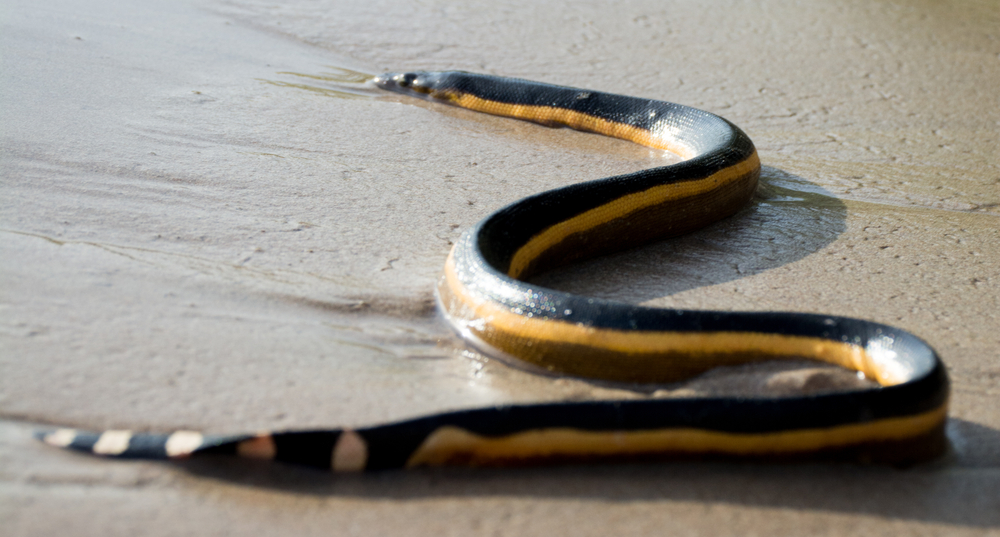
Many people set out on the hiking trail or get to work in their gardens aware they may come across a snake at some point. But it's a different story entirely when you're planning a day at the beach, thanks to a newly arrived venomous reptile.
"A particular species of sea snake—the yellow-bellied sea snake (Hydrophis platurus)—has started showing up with gradually increasing frequency off the coast of California in recent years," Charles van Rees, PhD, conservation scientist and naturalist at the University of Georgia, previously told Best Life. "In 2015, 2016, and 2018, several were found by beachgoers on Laguna and Huntington beaches, among others, in Southern California."
Van Rees also added, "Like other sea snakes, they have extremely toxic venom, so you certainly don't want to be bitten."
Fortunately, the same rules for staying safe from land-based snakes remain the same for aquatic ones.
"The yellow-bellied sea snake is not a danger to people if left alone," van Rees said. "These snakes are not known to be aggressive in the water and have small mouths and fangs that don't make it easy to bite people," adding that no deaths have ever been reported related to the species.
READ THIS NEXT: Venomous Snake Spotted Swimming Across Lake: "This Is a New Fear".
3
Bees, Hornets, and Wasps

Bees are the unsung heroes of the natural world, carrying an outsized burden as plant pollinators that help keep ecosystems functioning. But it takes just one sting from the winged insects to remember that they can also quickly become a serious risk in specific situations.
"Of all venomous animals in the U.S., the most fatalities are caused by the stinging Hymenoptera—bees, ants, wasps, and hornets," says animal expert Entomology Abby. "Due to the social behavior of some Hymenopterans, they may swarm or aggregate when provoked, leading to more stings."
She adds that some peoples' allergies to stings make them particularly dangerous. "Fatal encounters with venomous animals make up quite a small percentage of all deaths in the United States, but it is still important to exercise caution near animals," she cautions.
4
Cottonmouth Snake (Water Moccasin)
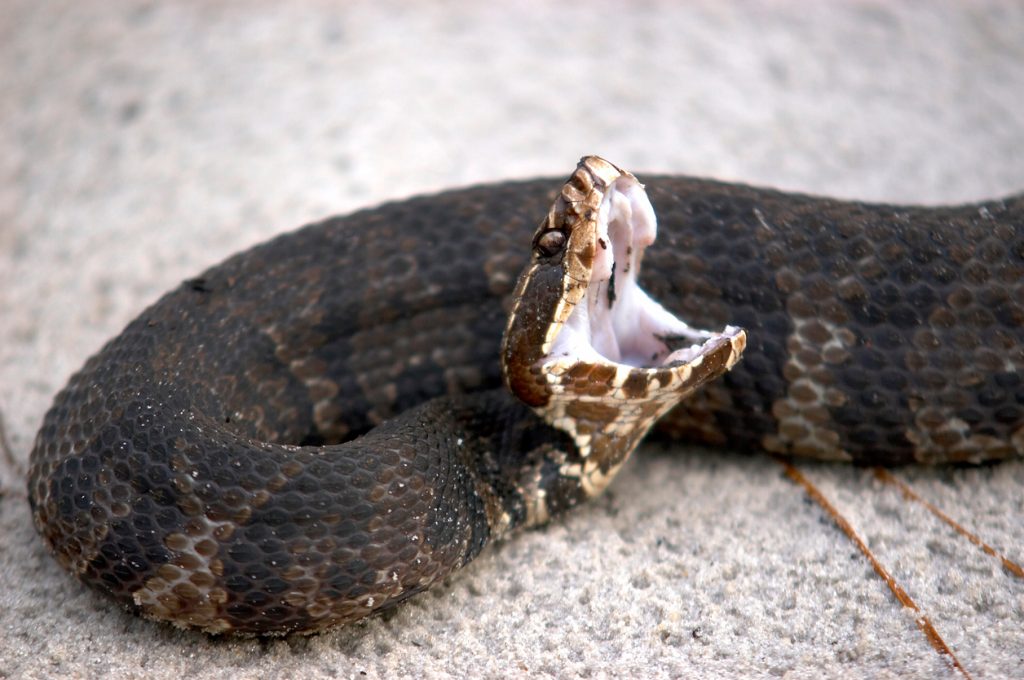
While the vast majority of snake species are non-venomous, there are a few that stick out as potentially dangerous due to their bite. This includes water moccasins—also known as cottonmouths—which get their name from their defensive posture that exposes the light-colored inside of their mouths before they strike.
"The cottonmouth is a venomous snake that is semi-aquatic and can be found in the southeastern part of the United States," says Phillips. "It is known for its relatively aggressive behavior and its ability to deliver a painful and potentially dangerous bite."
For more safety advice delivered straight to your inbox, sign up for our daily newsletter.
5
Box Jellyfish
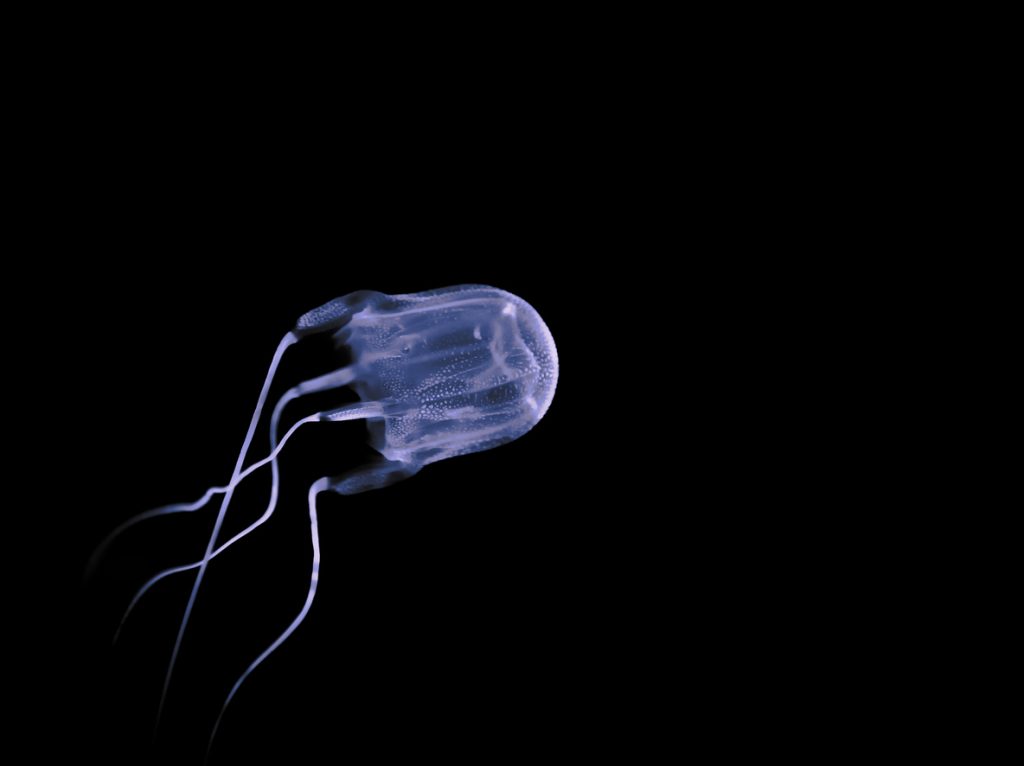
Anyone who's spent a day on the beach knows that besides dangerous currents, there are also some creatures that can pose a safety threat to anyone wading or swimming. And despite common fears, it's not just sharks that you need to be worried about.
"Box jellyfish are considered one of the most venomous creatures in the world," says Phillips. "Their tentacles contain venomous cells called nematocysts, which can deliver a potent venom that affects the cardiovascular and nervous systems. Several species of box jellyfish can be found in the waters of the Atlantic Ocean and the eastern Pacific Ocean."
6
Western Diamondback Rattlesnake

Coming across any type of venomous snake can be a cause for concern. But one species stands out for its unique warning sign it uses before it strikes.
"Most often found in the southwestern parts of the U.S., the western diamondback rattlesnake is responsible for numerous snakebite incidents," says Phillips. "It has a reputation for being aggressive and has potent venom."
